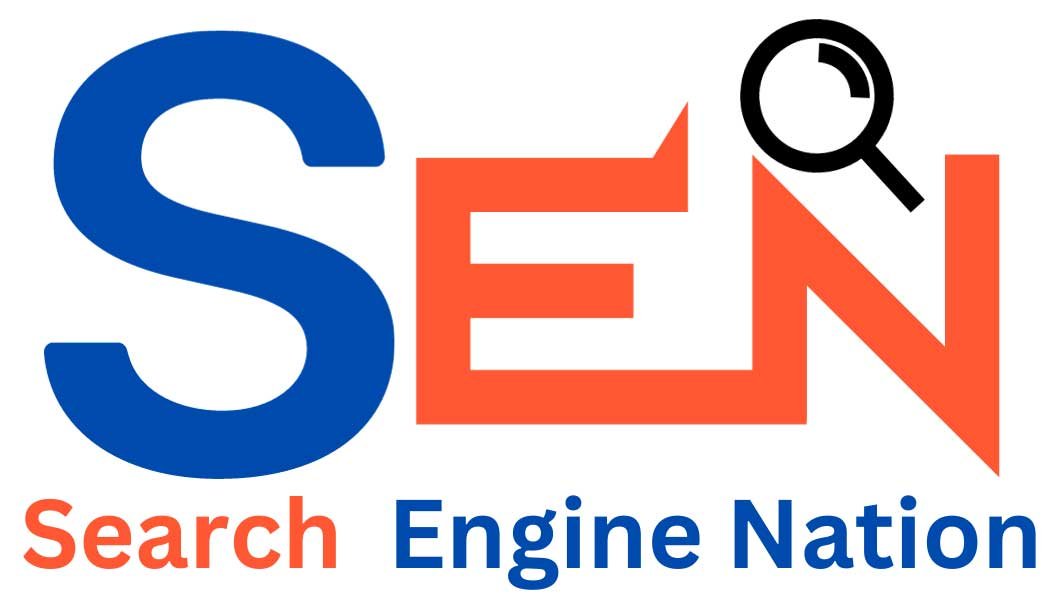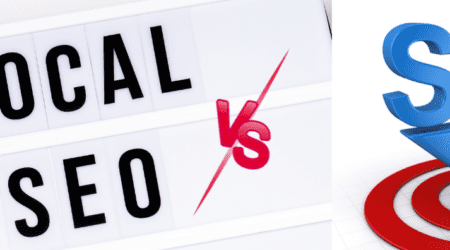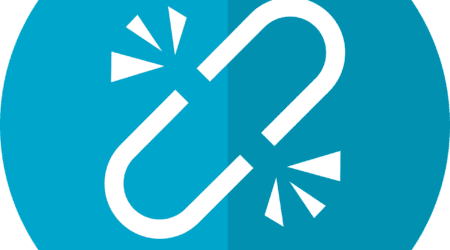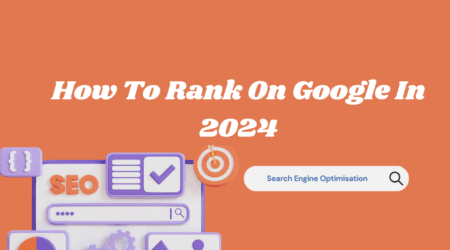Product Page SEO Mastery: The 2024 Complete Guide.
Roshan Rajput2024-02-21T10:39:13+00:00Product page SEO is the practice of optimizing individual product pages on an e-commerce site to rank higher in search engine results pages (SERPs). The goal is to increase organic traffic and conversions for specific products.
With over 50% of all e-commerce site traffic coming from organic search, having an effective product page SEO strategy is critical for driving more sales. Shoppers are increasingly using long-tail keyword searches to find specific products they want to buy. If your product pages don’t rank well for those searches, you’ll miss out on revenue opportunities.
This complete guide will provide an overview of best practices for optimizing product pages across on-page elements, site speed, internal linking, reviews, and more. We’ll also explore important tools for tracking product page SEO efforts.
By following the recommendations outlined in this guide, you can improve product visibility and discoverability in search engines like Google. The result will be more qualified site visitors finding your products organically, leading to increased conversions and revenue.
Keyword Research
Choosing the right keywords is one of the most important parts of optimizing product pages. The keywords you target should be relevant to your products and what customers are searching for. Here are some tips for researching and selecting effective keywords:
Use keyword research tools like Google Keyword Planner, SEMrush, or Moz Keyword Explorer to generate keyword ideas. Look at search volume data to identify high-traffic keywords that could bring qualified visitors.
Analyze your competitors’ product pages to see what keywords they are optimizing and ranking for. You may find good keyword opportunities this way.
Brainstorm keyword variations like long-tail keywords, questions, and comparisons. For example “best digital camera under $300” or “Canon vs Nikon DSLR comparison.” Long-tail keywords usually have less competition.
Look at autocomplete suggestions when searching Google and YouTube to find keywords people are starting to search for.
Use Google Trends to identify rising and falling keyword demand over time. This can reveal new opportunities.
Organize your keywords into groups or maps that target topics, product lines, categories, and types of queries. Use keyword mapping to determine focus keywords for each page.
Set priority keywords you want to optimize and rank for. Balance head terms and long-tail keywords in your optimization plan.
Continuously add to your keyword list over time as you create new content and products. Regularly update keyword priorities.
Thorough keyword research provides the foundation for targeting the right search terms in your content, titles, alt text, and more. Focus on keywords that align with your products and have sufficient search volume. This ensures your content reaches the right customers.
Page Titles & Meta Descriptions
Your product page titles and meta descriptions are critical for on-page SEO and click-through rates. Follow these best practices:
Page Titles
Keep titles under 60 characters – longer titles may get cut off in search results
Include your target keyword near the beginning
Make the title compelling and spark interest – use emotional language if appropriate
Write titles for users, not just search engines – include your brand name
Meta Descriptions
Keep descriptions under 160 characters – search engines will cut off longer text
Incorporate your focus keyword naturally 1-2 times
Write a description that makes users want to click and learn more
Add compelling details and benefits – explain what makes your product special
Use questions or action words to create curiosity
The page title and meta description are the first things users see about your page in search results. Craft compelling snippets optimized with your keywords to earn more clicks and traffic.
Headers & Content Structure
The header structure of a product page is critical for both user experience and SEO. Proper header tagging (H2, H3, etc) creates a clear hierarchy that helps users scan and digest information. For SEO, headers also enable search engines to understand the overall structure and important topics on the page.
Some best practices for headers and content structure include:
Use H2 headers to break up different sections on the page. Common sections are features, specifications, reviews, FAQs, buying guides, etc.
Within each section, use H3 headers to further break up content into subsections. For example, the Features section could have H3s for Design, Performance, Ease of Use, etc.
Optimize H2 and H3 headers to include target keywords where appropriate. This helps search engines understand the focus of each section. But don’t over-optimize – headers should still read naturally.
Avoid skipping header levels. Go from H2 to H3, not H2 to H4. This maintains the proper hierarchy.
Include 2-4 H2s and 3-6 H3s. Too many and the page becomes crowded. Too few and sections are too long.
Structure the page content in a logical order that users would expect. A product page is often an overview, features, specs, reviews, and FAQs.
Use short paragraphs and bullet points to make the page skimmable. Chunky text is hard to digest.
Getting the information architecture right with properly structured headers and content goes a long way in creating an optimized and user-friendly product page. It enhances both SEO and UX.
Images & Alt Text
Images can make a huge difference in the user experience on product pages. Relevant images allow users to visually inspect products and see them in use. Descriptive alt text provides additional keyword opportunities and improves accessibility. Optimized images also impact site speed.
When adding images to product pages:
Choose high-quality photos that accurately represent the product. Include different angles, close-ups of details, lifestyle images showing it in use, etc.
Optimize images to reduce file size without sacrificing quality. Use image compression tools to shrink files.
Host images on a fast, reliable CDN instead of your main site server. This improves load times.
Give images concise but descriptive alt text, using important keywords where relevant. Avoid generic phrases like “product image.”
Use alt text under 125 characters to provide useful information without impacting SEO.
Place images next to related content for better context. Break up long paragraphs by inserting complementary images.
Include image file names with target keywords, especially for hero images.
Proper use of images enhances product pages for both users and search engines. Visually rich pages with optimized images tend to perform better in SERPs and encourage social shares. Invest time in selecting quality hero images and lifestyle photography to showcase your products.
Gathering Genuine Reviews to Drive Conversion
Customer reviews are one of the most important factors for driving conversions and sales on product pages. Displaying authentic and relevant reviews can boost consumers’ trust and likelihood of purchasing.
To leverage reviews effectively:
Integrate review plugins and schema markup. Plugins like Yotpo allow you to easily display ratings, reviews, photos, and Q&As onsite. Implement schema markup so review-rich snippets appear in search engines. This enhances click-through rates.
Curate and filter reviews. Moderating reviews allows you to showcase relevant, high-quality feedback and hide inappropriate or irrelevant content. Prioritize reviews that provide detailed insight into product benefits and use cases.
Prompt for reviews. Don’t just wait for reviews to trickle in. Proactively request feedback via email and on-site popups. Offer incentives for leaving reviews. Time requests around the post-purchase experience when satisfaction is highest.
Respond and engage. Reply to both positive and negative reviews to show you value customers’ opinions. This builds trust and can improve sentiment.
Gather from multiple sources. Expand beyond just reviews on your site. Curate shopper feedback from social media, forums, review sites, and influencers to showcase a diversity of perspectives.
With thoughtful review curation and prominent display, you can leverage customer opinions to drive greater product page engagement and sales. Just ensure authenticity, relevance, and legal compliance. Reviews significantly sway buying decisions – optimize them for impact.
Site Speed
A crucial element for search engine optimization (SEO) is having fast page load times. Google has stated site speed is a ranking factor, so optimizing it can directly impact organic visibility and traffic. The goal should be a page load time of under 3 seconds.
There are several ways to improve site speed:
Optimize Images – Compress and resize images to reduce file size. Use image formats like WebP that load faster. Set image dimensions in HTML/CSS instead of loading full-size images.
Enable Caching – Caching stores pages, images, CSS, etc in the visitor’s browser so repeat visits load instantly. Use caching plugins like WP Rocket or leverage a CDN.
Minify Code – Minification removes extra spaces and characters in HTML, CSS, and JS files to reduce file size. Plugins like Autoptimize can minify and combine files.
Limit Plugins– Too many plugins can slow things down. Audit what’s needed, and remove unused plugins. Only keep essential performance plugins.
Optimize Database – A bloated database slows queries and page load. Regularly purge post revisions, comments, etc to streamline it.
Upgrade Hosting – More powerful hosting with SSD storage, a CDN, and caching improves performance. Test page speeds regularly.
With site speed optimized, pages will load faster, boosting user experience. This directly improves SEO rankings and conversion rates. It’s a crucial web performance area every site should prioritize.
Internal Linking
Internal linking is a crucial part of SEO that connects the pages within your site together. By linking relevant pages together, you make it easier for search engines to crawl and index your site. It also creates a better user experience by enabling users to naturally navigate to related content.
There are a few best practices to follow for internal linking:
Cross-link related products or categories – If you sell products, make sure to link to related products and categories throughout your site. This helps search engines understand the relationships between products. For example, on a product page you can link to accessories or complementary products in the content or a sidebar.
Link deeper pages to higher-level category pages – Link specific product, article or category pages to higher-level category pages to provide more context to search engines. For example, link a specific product page to its main category page.
Use descriptive anchor text – Anchor text should describe what the page you’re linking to is about, using relevant keywords where appropriate. Avoid overusing generic terms like “click here”.
Link to related content – Look for opportunities to interlink related content together so search engines can better understand the topic connectivity of your site. If you have related guides or blog posts, link to them within the body content.
Use internal links in footers and navigation – Menu systems and footers provide many opportunities to link deeper into your site architecture. Make sure to link to important categories and landing pages.
Link to popular pages– Prioritize linking to your most authoritative, shared, and linked-to pages, as PageRank can flow through internal links.
Following SEO best practices for internal linking helps search engines crawl, provides a smoother user experience, and distributes equity across your site. Track your internal linking performance using site crawls and link analysis to identify opportunities.
Tools & Analytics
Monitoring your product pages and tracking their performance is crucial for SEO success. Here are some of the main tools you should be using:
Google Search Console
This free tool from Google allows you to see how your pages are performing in search results. Connect your site to the Search Console and you can:
Check your page’s index status – are they all being crawled and indexed properly?
See any crawl errors that need fixing.
View clickthrough rates from search results.
Identify queries your pages are ranking for.
Access page speed insights.
Making use of Google Search Console data can help uncover SEO issues and opportunities for your product pages.
Google Analytics
Integrate Google Analytics with your website to
Track visits and visitors to your product pages. See sources, browse rates, time on page, etc.
View conversions to see which product pages generate the most sales.
Set up goals to track micro-conversions like newsletter signups or clicking “Learn More” buttons.
Understand user behavior flow to see which pages users visit before landing on a product page.
Rank Tracking Software
Use tools like SEMrush, Ahrefs, or Moz to regularly check the rankings of your key product pages for your target keywords. Tracking rankings over time shows the impact of your optimization efforts.
Keyword Ranking Reports
Some SEO tools will provide weekly/monthly ranking reports so you can easily monitor the top pages and keywords driving traffic. Review these frequently.
Supplement With Manual Checks
Do manual spot checks yourself in a browser in incognito mode to confirm rankings. Tools aren’t perfect and manual checks can catch inconsistencies.
Keeping a close eye on critical metrics through analytics and ranking tools is key for continually improving your product page SEO.
Ongoing Optimization
Optimizing product pages is not a set-it-and-forget-it activity. Search engines and best practices are constantly evolving, so you need to continually re-evaluate and test different elements of your product pages. Here are some tips for keeping your optimization efforts up-to-date:
Continual testing: You should continually test different page elements like titles, descriptions, headers, content, etc. Try different keywords, formats, lengths, etc., and see how they impact click-through rates and conversions. Use A/B testing tools to validate any changes.
Watch for search engine updates: Keep an eye out for Google and other search engine algorithm updates. Major updates can change how pages are ranked, so you may need to adjust your optimization strategy.
Follow SEO blogs and forums: Stay on top of the latest SEO trends, techniques, and best practices by following industry blogs, forums, influencers, etc. But don’t jump on every new fad – validate with your testing.
Learn from analytics: Use your site analytics to identify opportunities – are there keywords sending traffic that you can further optimize for? Are bounce rates high on certain pages? Let data guide your ongoing optimization efforts.
Iterate and improve: SEO is never “finished” – you should continually iterate and test to find incremental improvements over time. Appoint someone to be responsible for monitoring and tweaking page optimization on an ongoing basis.
Check performance regularly: Check important SEO metrics like rankings, traffic, and conversions regularly to assess how your product pages are performing over time. If you see declines, it’s time for a refresh.
Keep pages fresh: Update page content periodically to keep it fresh and engaging for both users and search engines. Reflect on new products, developments, trends, and insights.
Follow emerging best practices: As new formats like videos, structured data, etc gain traction, test implementing emerging best practices on your product pages to remain competitive. But always validate with your testing first.
By dedicating resources to ongoing optimization and being vigilant about changes in SEO, you can ensure your product pages remain high-performing over time. Continual testing and iteration are key to sustaining optimal rankings and conversions.












